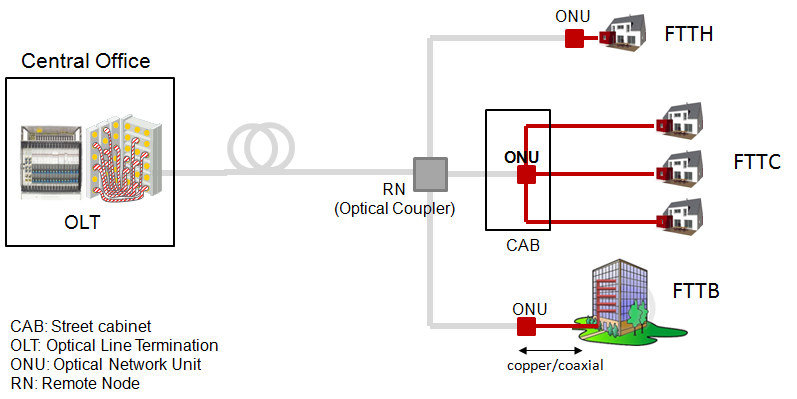FTTx Networks Explained: Fiber to the X Architectures and Benefits
telcomatraining.com – In today’s digital world, fast and reliable internet connectivity is essential for both individuals and businesses. As the demand for higher bandwidth grows, traditional copper-based networks are being replaced by fiber-optic technologies. One of the most prominent solutions in this space is FTTx, which stands for Fiber to the X. This term encompasses a variety of fiber-optic broadband network architectures, each designed to deliver high-speed internet in different ways. But what exactly does FTTx mean, and why is it so beneficial? Let’s explore.
What Is FTTx?
FTTx refers to a family of broadband network architectures that use fiber-optic cables to provide all or part of the local loop used for last-mile telecommunications. The “X” in FTTx represents the point to which the fiber is extended. Depending on this point, the network can take on several forms, including:
- FTTH (Fiber to the Home): Fiber reaches the individual residence.
- FTTB (Fiber to the Building/Business): Fiber terminates at a building, and internal wiring carries the connection to each unit.
- FTTC (Fiber to the Curb/Cabinet): Fiber stops at a street cabinet close to the user, with the final connection made via copper.
- FTTN (Fiber to the Node/Neighborhood): Fiber goes to a central point in a neighborhood, and copper lines complete the connection.
These architectures vary in speed, cost, and implementation complexity, but all share one goal: to deliver faster, more stable internet connections.
How FTTx Works
At the core of FTTx networks is the use of fiber-optic cables, which transmit data using light signals rather than electrical impulses. This allows for dramatically faster data transmission and a much higher bandwidth capacity compared to traditional DSL or cable systems.
A typical FTTx network connects the central office (CO) of an internet service provider (ISP) to the customer premises. The closer the fiber gets to the end user, the better the quality and speed of the connection. Technologies such as GPON (Gigabit Passive Optical Networks) and EPON (Ethernet Passive Optical Networks) are often used to manage and distribute the fiber connections efficiently.
Key Benefits of FTTx Networks
- High-Speed Internet Access
Fiber-optic connections can support gigabit speeds, enabling ultra-fast downloads, smooth 4K streaming, and lag-free video conferencing. - Greater Bandwidth
With higher capacity, FTTx networks can handle multiple devices and heavy data usage simultaneously, making them ideal for modern households and enterprises. - Improved Reliability
Fiber networks are more resistant to electromagnetic interference and environmental factors, reducing downtime and improving connection stability. - Future-Proof Technology
Fiber infrastructure can easily accommodate future upgrades and increased data demands, offering long-term value for both providers and consumers. - Lower Latency
By minimizing the distance and using high-speed light transmission, FTTx offers significantly lower latency, improving performance for real-time applications like gaming and VoIP. - Energy Efficiency
Fiber networks consume less power than copper-based systems, contributing to greener, more sustainable operations.
The Growing Demand for FTTx
As smart devices, IoT applications, and cloud-based services become increasingly common, the demand for high-capacity, low-latency networks continues to rise. Governments and private sectors around the world are investing in FTTx infrastructure to bridge the digital divide and support the next generation of digital innovation.
Conclusion
FTTx networks represent the future of internet connectivity. By leveraging the power of fiber-optic technology, these architectures offer unparalleled speed, reliability, and scalability. Whether it’s FTTH, FTTB, or another variation, adopting FTTx is a strategic move toward a more connected and technologically advanced society. For anyone seeking robust and future-ready broadband solutions, FTTx is the clear choice.







